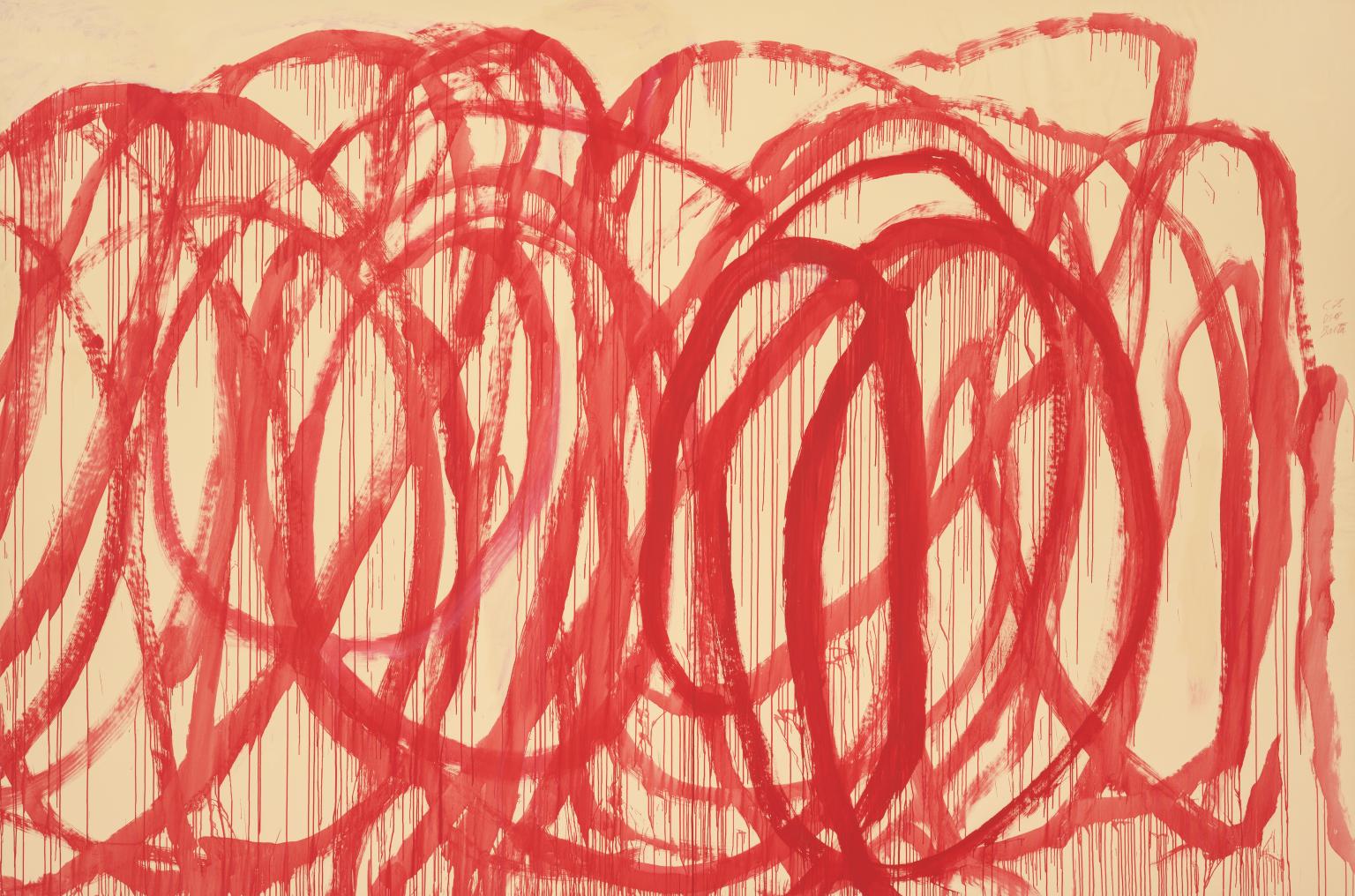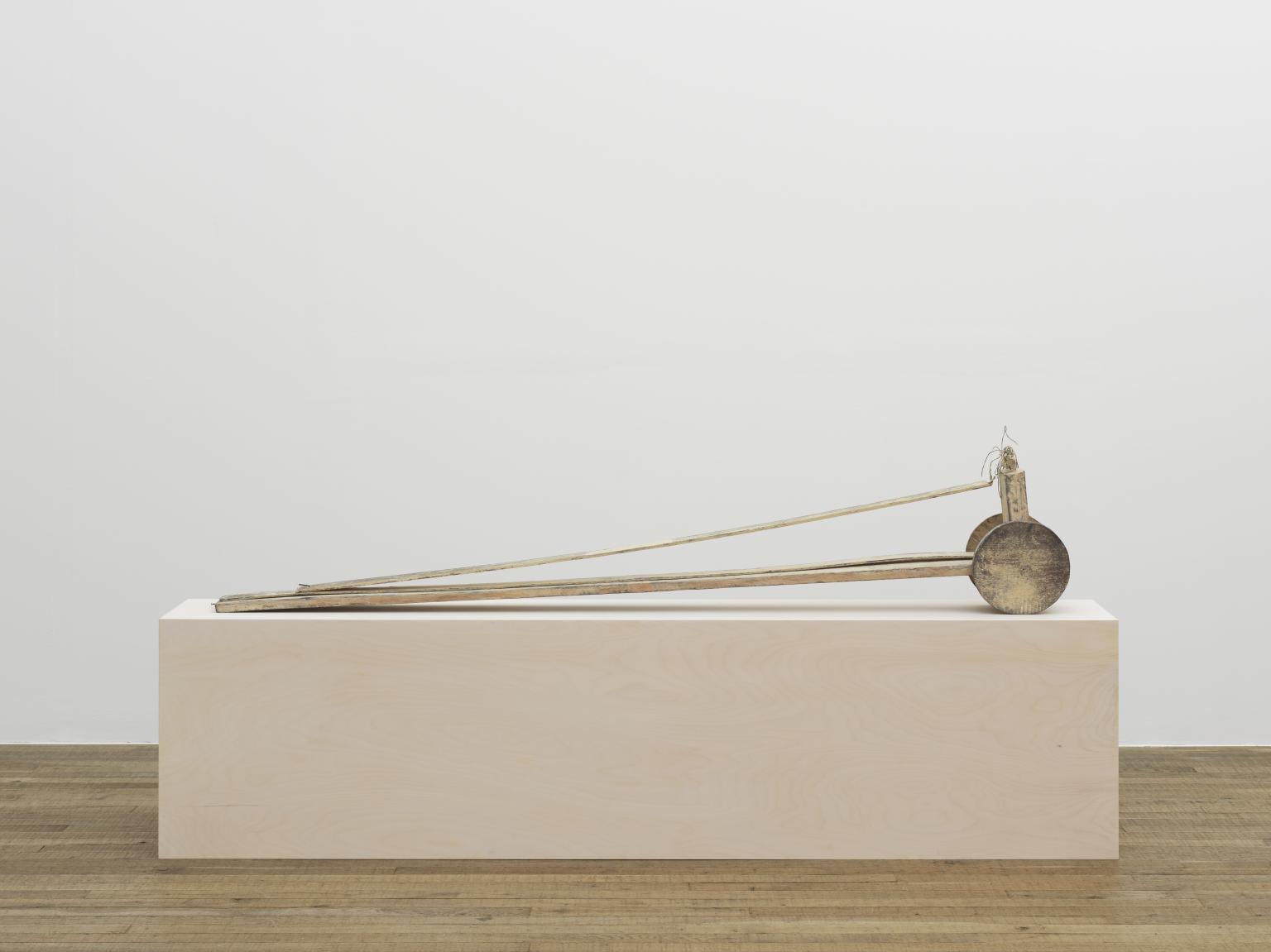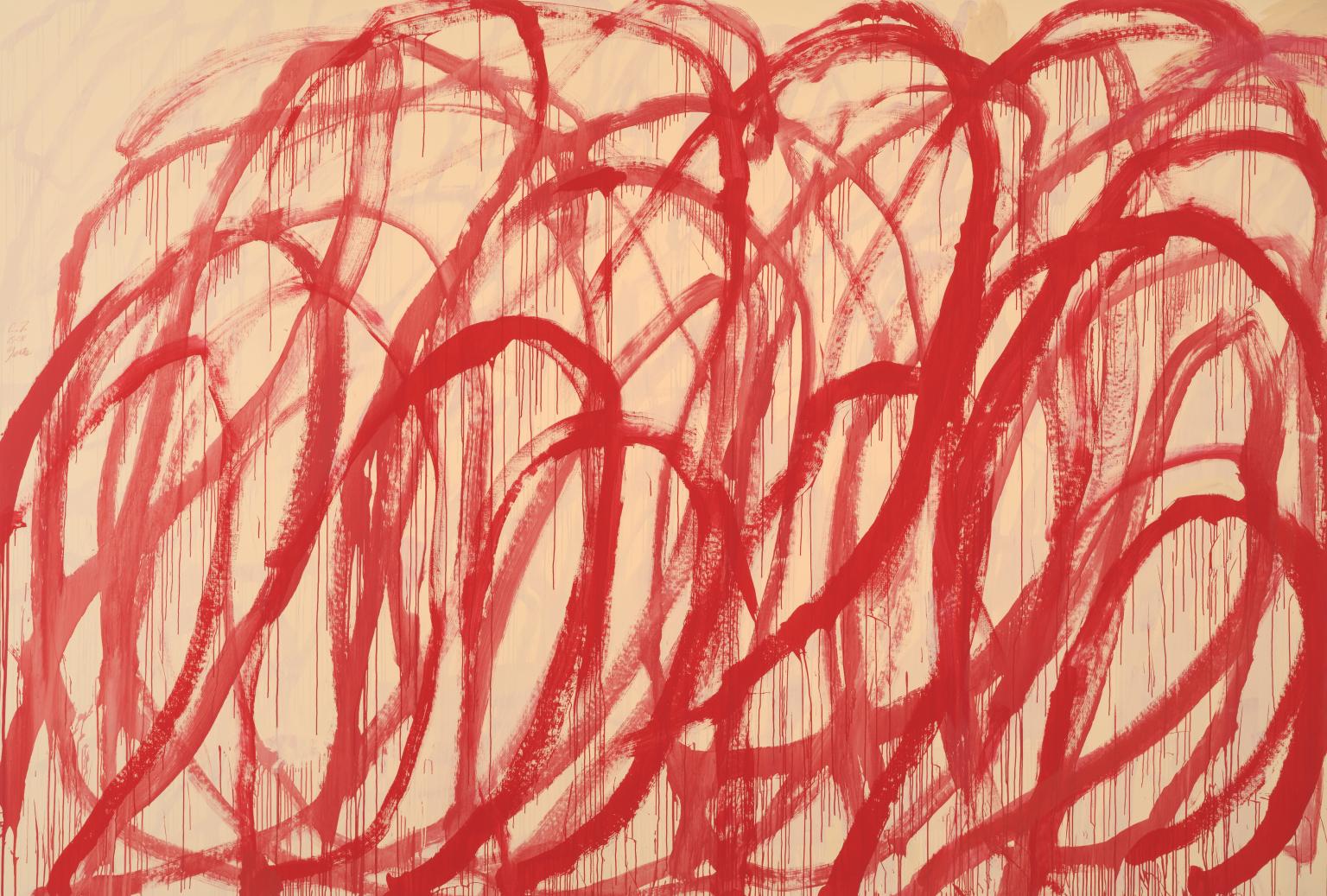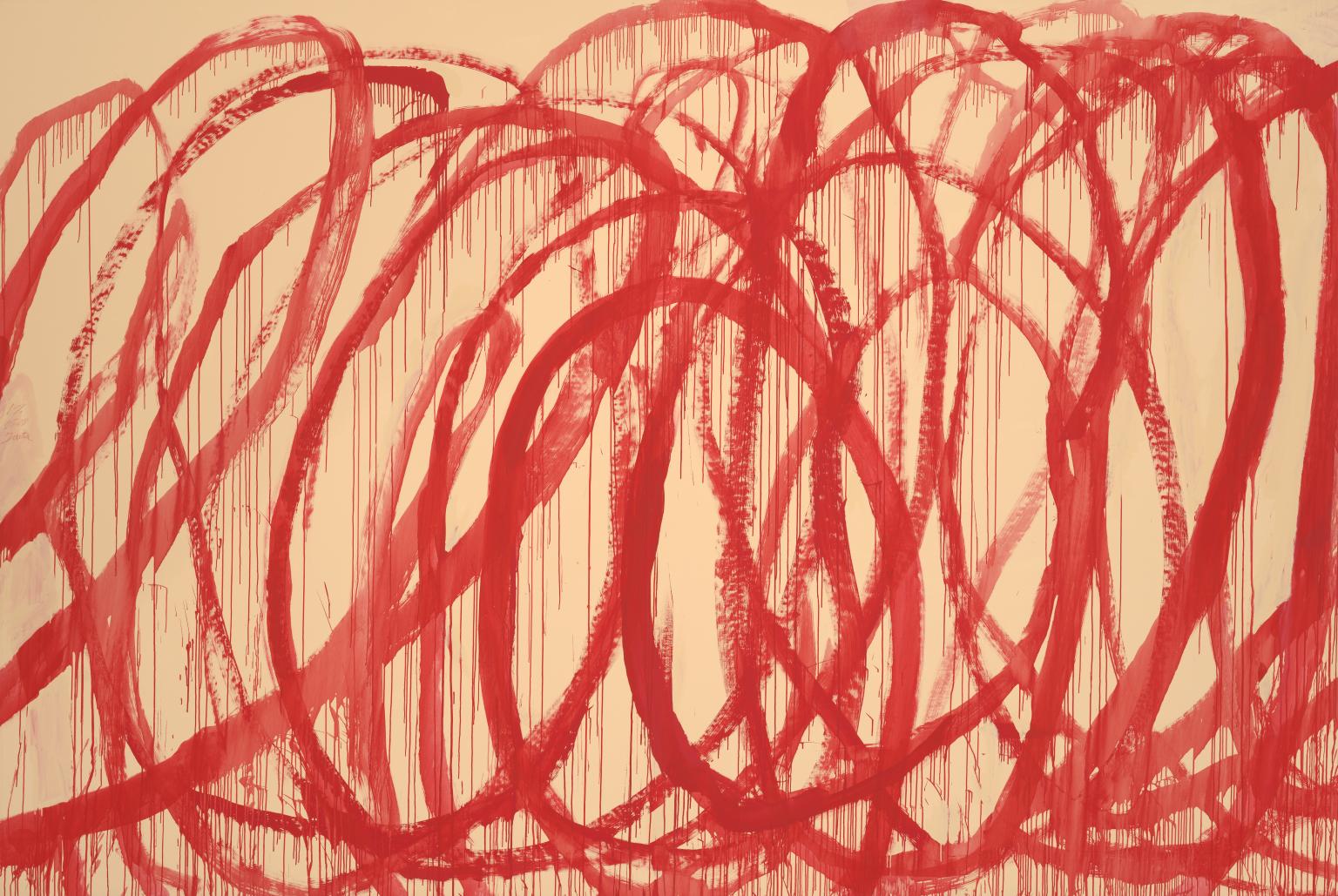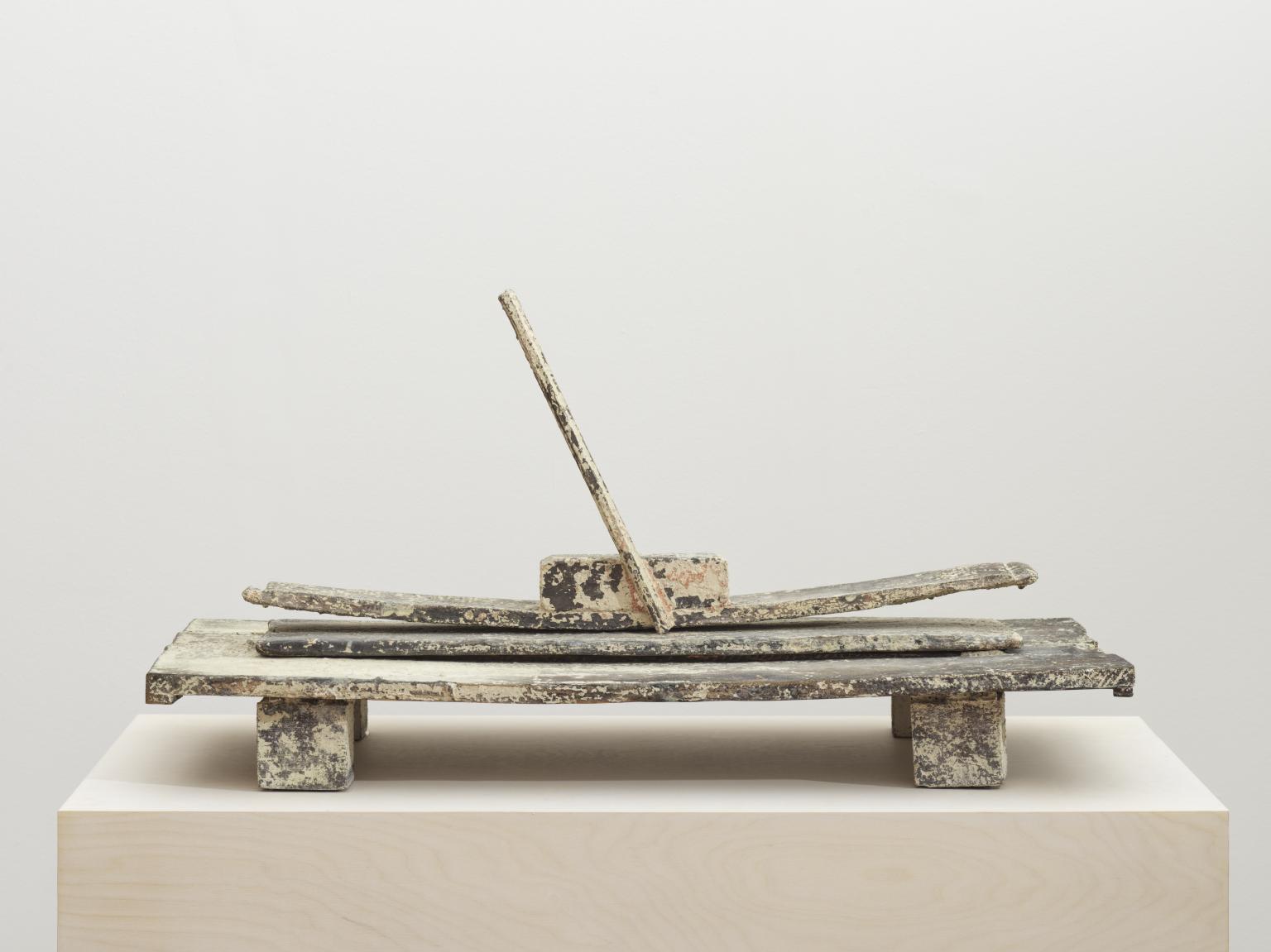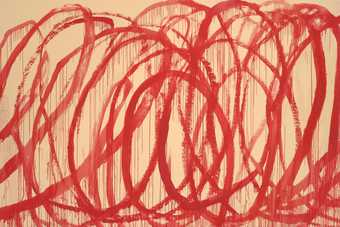12 rooms in In the Studio
Discover the work of Cy Twombly, whose pared-back approach engages with ancient history and myth.
Cy Twombly was a North American artist who spent much of his career in Italy. He was fascinated by the cultures of ancient Greece and Rome. In his paintings he often referred to historical or mythological figures, or included fragments of classical poetry.
The three paintings in this room are named after Bacchus. He was the Roman god of wine and intoxication, known to the Greeks as Dionysus. His rituals involved drunkenness and ecstatic dancing. In ancient myth, he was also associated with violence and his followers were depicted as eating the raw flesh of animals.
In the 1950s Twombly wrote that the act of painting could come out of ‘one ecstatic impulse’. Made 50 years later, these swirls of paint convey a similar intensity. They were made with a brush attached to the end of a pole, enabling Twombly to capture the energy of an unbroken movement across a large canvas. The brush was soaked in paint, which dripped down the canvas, its red colour evoking both wine and blood.
The sculptures shown here resemble ancient artefacts such as chariots or ships. Twombly originally made them from found objects and discarded pieces of wood, before casting them in bronze.
Art in this room
